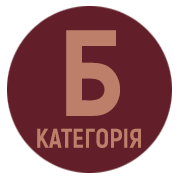THEMATIC RANGE OF UKRAINIAN URBAN LYRICS OF 40–50’s OF THE TWENTIETH CENTURY
DOI:
https://doi.org/10.24919/2522-4565.2021.45.25Keywords:
city lyrics, urban theme, city topos, image of the cityAbstract
The purpose of the article is analysis and systematization of thematic innovations of Ukrainian urban lyrics of the 40-50’s of the twentieth century. Theoretical and methodological basis of the study is historical and cultural, historical-literary, comparative, typological, and general scientific methods (synthesis, generalization, systematization, etc.). The object of research is the lyrical works of Ukrainian poets, whose semantics testified logically and brilliantly the thematic association with urban artistic issues, in particular the works of poets 40-50s of the twentieth century: M. Rylskyi, P. Tychyna, V. Sosiura, E. Malaniuk, I. Nekhoda, L. Zabashta, I. Bagrinyi, V. Onufriienko, D. Pavlychko, etc. The subject of research is the thematic priorities of the artistic evolution of the city discourse in Ukrainian poetry of 40-50’s of the twentieth century, found out in the works of its representatives and certified in the plane of its ideological and thematic issues, genre-style principles of artistic organization of urban poetic discourse, specific methods of its poetics. The scientific novelty of the obtained results lies in the fact that the study characterized combination of basic semantic models of the image of the city discourse in the Ukrainian urban lyrics of the 40-50’s of the twentieth century. As a result of the study it was found that: 1) The urban lyrics, which reflected the events and cataclysms of the Second World War prevails in the poetry of the 40-s. 2) The period of 40-50s is associated with significant expansion of geographical horizons of the foreign text of Ukrainian urban lyrics. 3) Axiological and evaluating tendencies the city lyrics of that time receive two clearly distinguished thematic vectors of development. In particular, the urban discourse of Ukrainian Soviet poetry is marked predominantly by stereotypes of totalitarian ideological engagement and official imperial historiography, while an antitotalitarian myth in the urban lyrics of the 40-50’s is represented by creativity of those Ukrainian poets who were in forced emigration. The poetic spin of the antitotalitarian myth is aimed at the most odious centers of the imperial state machine: Kolyma, Petersburg, Moscow. 4) The antitotalitarian myth opposes the image of Kyiv – the ancient capital of Ukraine as the holy image for all Ukrainians which symbolizes its future state and political revival as unattractive, demonized images of the imperial cities.
References
Багряний І. Золотий бумеранг. Київ : Рада, 1999. 679 с.
Дмитерко Л.Д. Твори : у 4-х т. Київ : Дніпро, 1981. Т. 1. 487 с.
Маланюк Є. Ф. Повернення. Львів : Світ, 2005. 496 с.
Масенко Т. Твори : у 2-х т. Київ: Державне видавництво художньої літератури, 1963. Т. 2. 238 с.
Нехода І. Вибране. Київ : Дніпро, 1980. 318 с.
Павличко Д.В. Вибрані твори в двох томах. Київ : Дніпро, 1979. Т. 2. 478 с.
Славутич Яр. Твори. Київ : Дніпро, 1998. Т. 1. 469 с.
Тичина П. Зібрання творів : у 12-ти т. Київ : Наукова думка, 1984. Т.2. 563 с.



